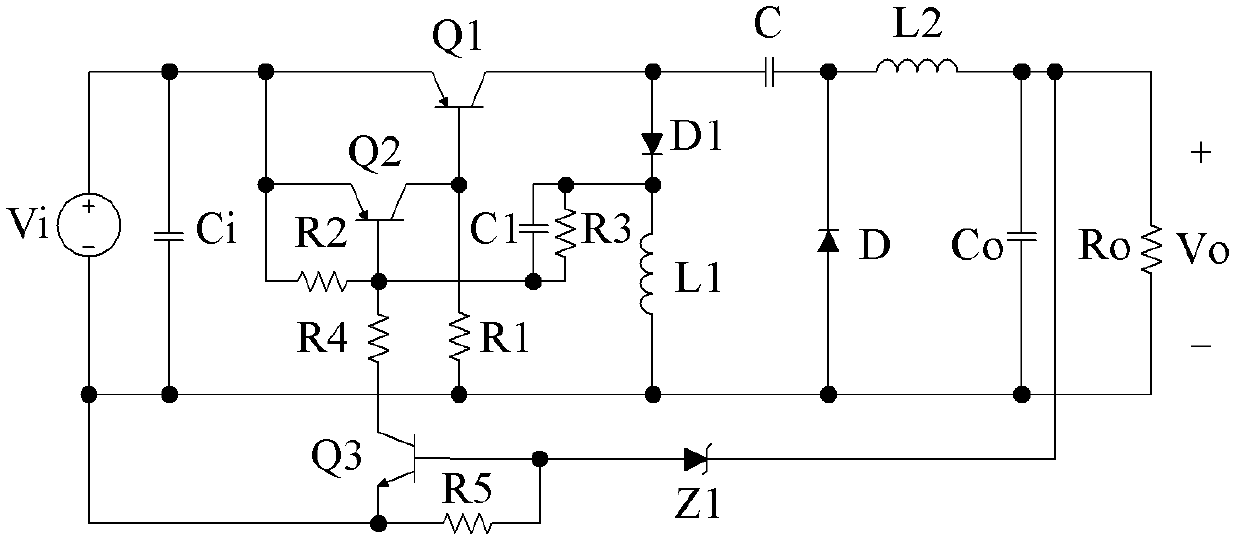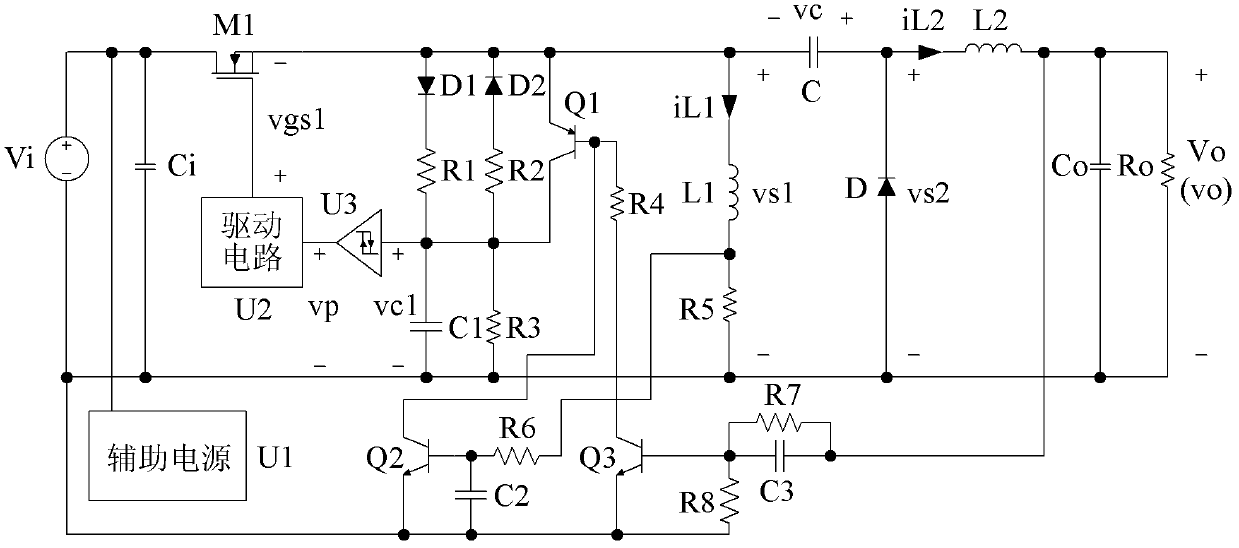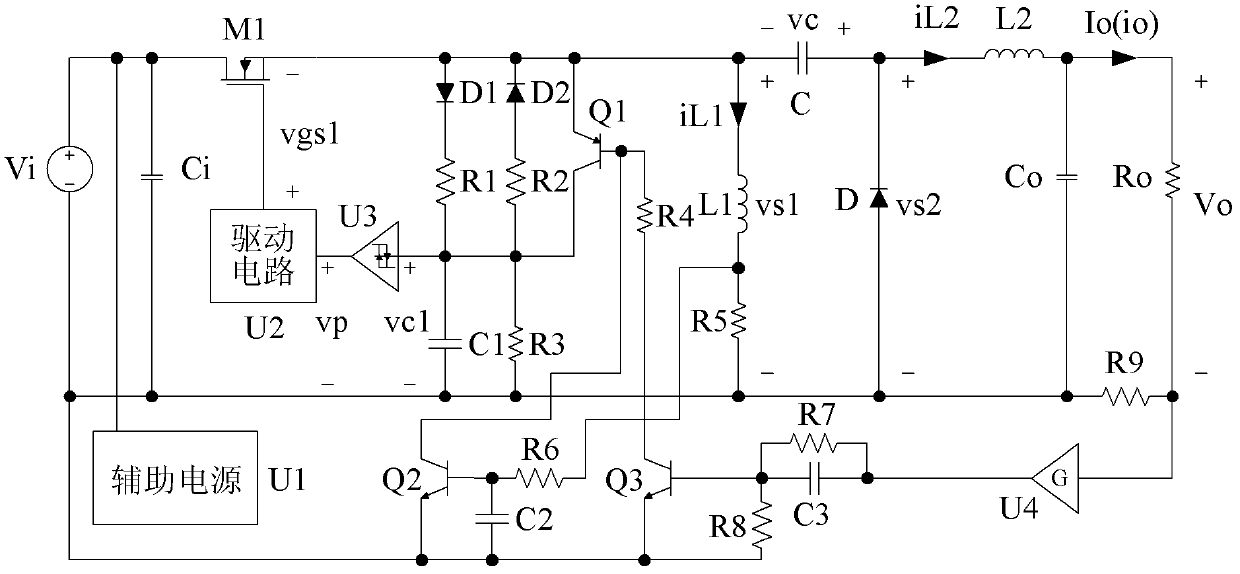MOSFET-based auto-excitation type Zeta converter
A converter, self-excited technology, applied in output power conversion devices, DC power input conversion to DC power output, instruments, etc., can solve the problem of insufficient self-excited Zeta converter efficiency, and achieve high efficiency, circuit simple structure
- Summary
- Abstract
- Description
- Claims
- Application Information
AI Technical Summary
Problems solved by technology
Method used
Image
Examples
Embodiment 1
[0022] refer to figure 2 , Figure 4 and Figure 5, a MOSFET-based self-excited Zeta converter, including the Zeta converter main circuit composed of input capacitor Ci, N-type MOSFET M1, inductor L1, capacitor C, diode D, inductor L2 and capacitor Co, the input capacitor Ci and The DC voltage source Vi is connected in parallel, the voltage across the output capacitor Co is the DC output voltage Vo, the load Ro is connected in parallel with the output capacitor Co, the positive terminal of the DC voltage source Vi is connected to the drain of the N-type MOSFET M1, and the source of the N-type MOSFET M1 It is connected to one end of the inductor L1 and one end of the capacitor C, the other end of the inductor L1 is connected to one end of the resistor R5, the other end of the resistor R5 is connected to the negative end of the DC voltage source Vi, and the other end of the capacitor C is connected to the cathode of the diode D and One end of the inductor L2 is connected, the...
Embodiment 2
[0030] refer to image 3 , Figure 4 and Image 6 , the present embodiment also includes a current feedback branch, the current feedback branch includes a detection resistor R9, a voltage amplifier U4, a resistor R7, a capacitor C3, a resistor R8, an NPN type BJT Q3, a resistor R4, and a PNP type BJT Q1, and the detection resistor R9 and the load Ro form a series branch, the series branch is connected in parallel with the output capacitor Co, one end of the detection resistor R9 is connected to the negative end of the DC voltage source Vi, the other end of the detection resistor R9 is connected to one end of the load Ro and the voltage amplifier U4 connected to the input of the resistor R7 and the capacitor C3 to form a second parallel branch, one end of the second parallel branch is connected to the output of the voltage amplifier U4, and the other end of the second parallel branch is connected to one end of the resistor R8 And the base of NPN type BJT Q3 is connected, the ...
PUM
 Login to View More
Login to View More Abstract
Description
Claims
Application Information
 Login to View More
Login to View More - R&D
- Intellectual Property
- Life Sciences
- Materials
- Tech Scout
- Unparalleled Data Quality
- Higher Quality Content
- 60% Fewer Hallucinations
Browse by: Latest US Patents, China's latest patents, Technical Efficacy Thesaurus, Application Domain, Technology Topic, Popular Technical Reports.
© 2025 PatSnap. All rights reserved.Legal|Privacy policy|Modern Slavery Act Transparency Statement|Sitemap|About US| Contact US: help@patsnap.com



